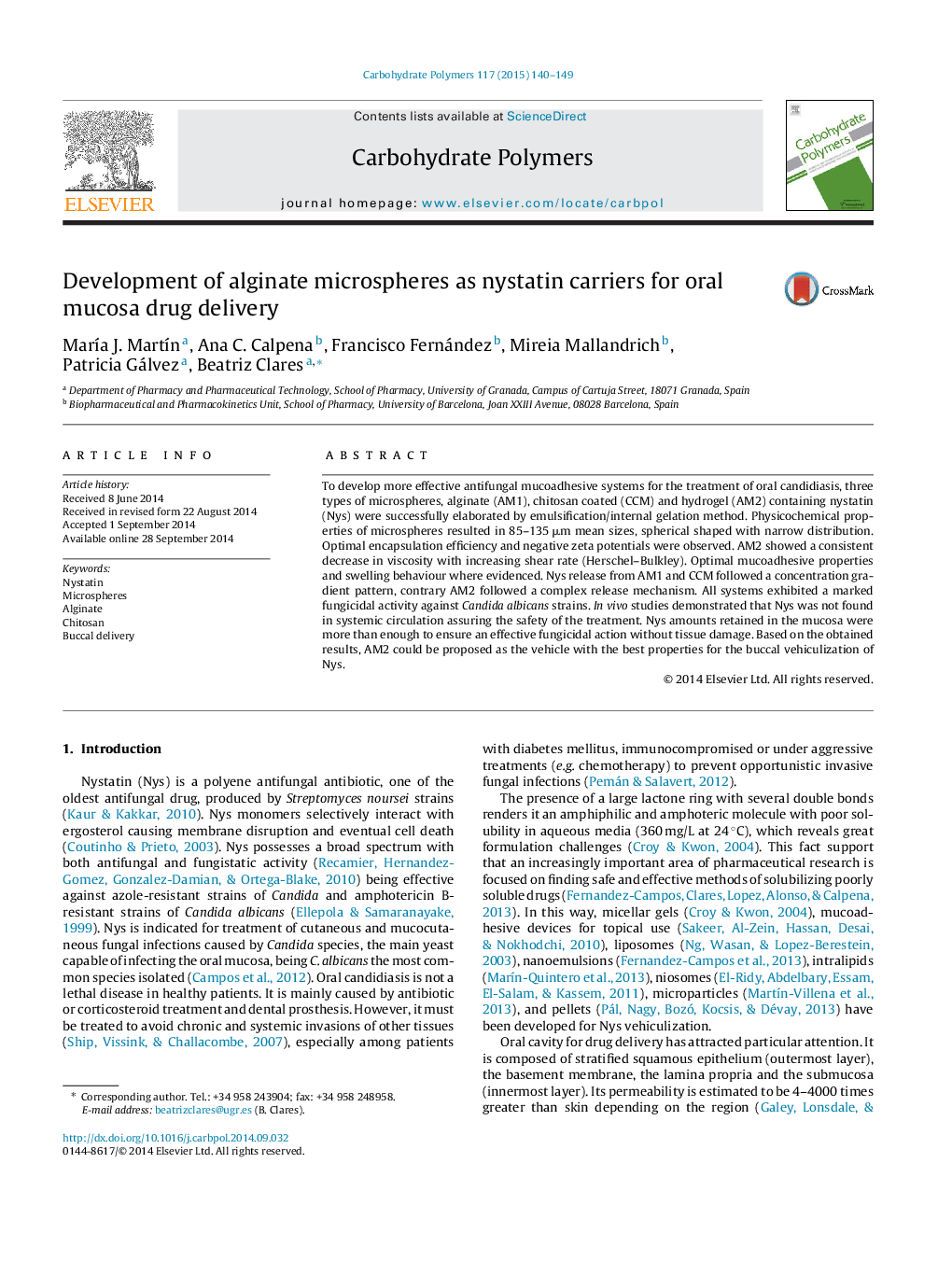| Article ID | Journal | Published Year | Pages | File Type |
|---|---|---|---|---|
| 7789519 | Carbohydrate Polymers | 2015 | 10 Pages |
Abstract
To develop more effective antifungal mucoadhesive systems for the treatment of oral candidiasis, three types of microspheres, alginate (AM1), chitosan coated (CCM) and hydrogel (AM2) containing nystatin (Nys) were successfully elaborated by emulsification/internal gelation method. Physicochemical properties of microspheres resulted in 85-135 μm mean sizes, spherical shaped with narrow distribution. Optimal encapsulation efficiency and negative zeta potentials were observed. AM2 showed a consistent decrease in viscosity with increasing shear rate (Herschel-Bulkley). Optimal mucoadhesive properties and swelling behaviour where evidenced. Nys release from AM1 and CCM followed a concentration gradient pattern, contrary AM2 followed a complex release mechanism. All systems exhibited a marked fungicidal activity against Candida albicans strains. In vivo studies demonstrated that Nys was not found in systemic circulation assuring the safety of the treatment. Nys amounts retained in the mucosa were more than enough to ensure an effective fungicidal action without tissue damage. Based on the obtained results, AM2 could be proposed as the vehicle with the best properties for the buccal vehiculization of Nys.
Related Topics
Physical Sciences and Engineering
Chemistry
Organic Chemistry
Authors
MarÃa J. MartÃn, Ana C. Calpena, Francisco Fernández, Mireia Mallandrich, Patricia Gálvez, Beatriz Clares,
